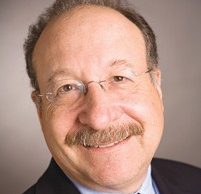With a potentially expensive lawsuit settled, the city of Santa Barbara will have district elections starting this November.
However, the Santa Barbara Regional Chamber is one group that believes the city council’s abrupt decision has pre-empted what might have been a better solution.
“We certainly aren’t happy that we’re being forced into this,” chamber President Ken Oplinger told the Business Times. “From our perspective, of course, we want to see that everyone’s vote counts and that people are represented by those they believe truly speak for them. But time and time again, it’s been seen that district elections lead to a much more parochial attitude in an elected body.”
With district elections, Oplinger said the system doesn’t bode well for the city as a whole and that those elected to represent their districts would kowtow to constituent demands and reelection at the expense of solid overall governance.
“This is being shoved down our throats and we don’t have a choice,” he said, noting that going to trial would have just cost the city more money with the same outcome.
If the city had gone to trial and lost, a likely outcome under the California Voting Rights Act, it would potentially have been left to pay millions in attorney’s fees. The decision to settle probably saved the city a multi-million dollar payout.
The city agreed to pay attorneys’ fees and expert costs in the amount of $599,500. These fees represent a fraction of the potential liability if the case had gone to trial, according to city officials. Fee awards in other cities for similar lawsuits have been as high as $3.5 million.
For lawyer Barry Cappello’s clients and the suit’s supporters, the settlement is a big win against the city’s at-large voting system. The suit, Banales et al. v. City of Santa Barbara, alleged that at-large elections for city council members have led to Latino vote dilution in violation of the California Voting Rights Act. While Latinos comprise 38 percent of the city’s population, they have been vastly underrepresented on the council over the years.
However, the city council still retains the power to draw the new district electoral boundaries, which could lead to another legal standoff.
Under the settlement, the geographical boundaries of the new electoral districts will be determined by the council, with the assistance of the community, during a public hearing process including workshops and hearings on Feb. 28 and March 18.
The city council will conduct hearings on March 24 and 30 to finalize the district plan map boundaries. The Santa Barbara Superior Court will have to render a final judgment approving the plans.
To expedite the process, the city is creating a districting process website with interactive tools that are meant to facilitate and encourage public participation. The website is expected to be online before the Feb. 28 workshop and hearing.
“The council is pleased that the crucial process of designing electoral districts will be conducted in open and public hearings during February and March,” said Mayor Helene Schneider in a press release. “With a robust website and at least four public hearing opportunities, we believe the settlement respects and protects key democratic principles guaranteeing the whole community’s ability to have a voice in the district mapping process.”
Within the redistricting plan, the intention is to design two “majority-minority” districts in which Latino voters will comprise a voting majority. These districts must be drawn in a manner that complies with state and federal voting rights law.
Going forward, in 2021, the city will appoint an Independent Redistricting Commission, consisting of three retired state or federal judges. The commission will draw a redistricting map which will be in effect through 2031. After that, the council will be responsible for future redistricting.
If the parties don’t come to a consensus on the electoral district map selected by the council, then following the deliberation process, the Santa Barbara Superior Court will be asked to resolve the map selection dispute.






 Print
Print Email
Email
















